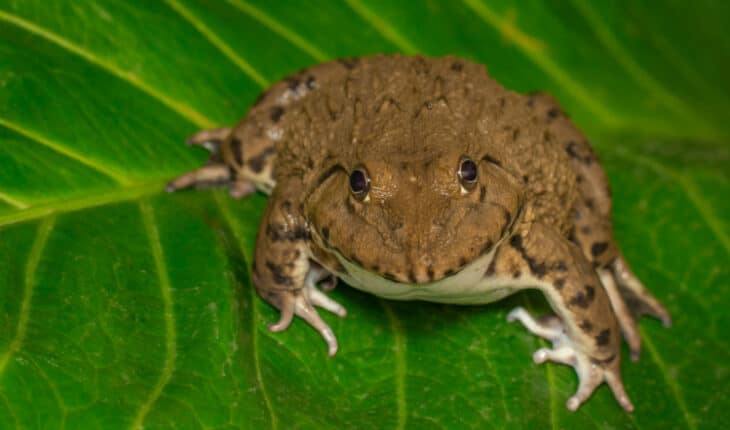Frogs could spawn a new treatment for type 2 diabetes: New research presented today at the Diabetes UK Professional Conference 2023 has revealed that a molecule secreted by frogs could offer a new treatment option for people with type 2 diabetes. The early-stage research found that a protein secreted by the East Asian bullfrog (Hoplobatrachus rugulosus) was effective at boosting insulin production as well as improving glucose tolerance in mice.
More than five million people are living with diabetes in the UK. Around 90% of these have type 2 diabetes, where the insulin made by beta cells in the pancreas doesn’t work properly, or the pancreas doesn’t produce enough insulin. This can lead to dangerously high blood sugar levels, and people with type 2 diabetes often need medication – including insulin, tablets such as metformin and other injectable medications – to manage their condition. For many people with type 2 diabetes, keeping blood sugar levels within a healthy range can be challenging, and it is important that there are a variety of treatment options available, so people can find the approach that best suits them.
The GLP-1 group of type 2 diabetes drugs, such as dulaglutide (for example Trulicity) and semaglutide (for example Ozempic), have been based on molecules found in animal venom, and skin secretions from frogs are also known to have insulin-stimulating properties. Previous research funded by Diabetes UK identified a molecule within these secretions, called tigerinin-1r, that can boost insulin release and suppress glucagon, a hormone that raises blood sugar levels.
In the study presented today, Dr Opeolu Ojo at the University of Wolverhampton explored the effects of combining tigerinin-1r with a hormone called GIP, a component of an existing type 2 diabetes drug, tirzepatide (Mounjaro), which triggers the release of insulin from the pancreas and suppresses appetite.
The team found that when combined, the two molecules did not cause any safety concerns, and improved insulin secretion in cells in the lab. The dual-combination drug increased insulin production by 50% in mice with type 2 diabetes compared to tigerinin-1r, and by 30% compared to GIP alone. The combination drug was also more effective at improving glucose tolerance – a measure of how well the body moves glucose out of the blood and into cells in mice, than tigerinin-1r or GIP alone.
Dr Opeolu Ojo said:
“Our research has uncovered the great potential of peptides from amphibian skin secretions, particularly their potential clinical use as novel agents for treating type 2 diabetes. By combining these peptides with some of the molecules that our body produces naturally, our desire is to create a safe and powerful alternative to current anti-diabetic medications which have many challenges, including their side effects and the ability to restore the body’s ability to control blood glucose.”
Dr Elizabeth Robertson, Director of Research at Diabetes UK, said:
“This innovative research has identified the untapped potential of a molecule secreted by frogs, that could boost existing type 2 diabetes drugs, leading to new and improved type 2 diabetes treatment options.
“We look forward to further research to explore how this exciting new combination treatment could be used to help people living with type 2 diabetes manage their blood sugar levels and potentially reduce their risk of serious diabetes-related complications.”
- New lipid-based pathway discovered as key to memory formation - 25th June 2025
- Crucial link could explain how Alzheimer’s takes hold - 25th June 2025
- Understanding Your Mind Can Improve Daily Life - 25th June 2025






